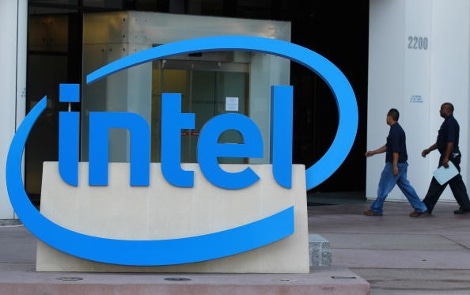Intel Finally Releases Its Rack Scale Design to Open SourceIntel Finally Releases Its Rack Scale Design to Open Source

Just a few weeks ahead of its upcoming IDF conference in San Francisco, Intel announced Thursday that the data center asset utilization platform it has been assembling since 2013 is now ready to be shared with the open source community. Rack Scale Design (RSD, no longer called “Rack Scale Architecture” for obvious reasons) is now being published by Intel.
You can meet with industry leading rack companies as they exhibit at Data Center World from Sept. 12-15 in New Orleans.
By sharp contrast with Facebook’s Open Compute Project reference architecture, RSD is an effort to arrive at an acceptable industry standard around the arrangement of disaggregated computing resources in standard-sized racks. At the center of the discussion is software-defined infrastructure. Rather than produce proprietary software that manages virtual assets pooled together from these racks, Intel is publishing libraries of REST-based APIs utilizing JSON code, with which developers may produce their own monitoring and management software, or integrate existing software with RSD systems.
This way, other people’s software can define the infrastructure.
“This is the first step in preparing the broader ecosystem for pooled resources and a path to a software-defined infrastructure,” wrote Charles Wuischpard, Intel’s VP/GM for Scalable Datacenter Solutions, in a company blog post Thursday. “Through its ability to provide a new systems-level architecture that uncouples a system’s resources, Intel Rack Scale Design helps hyperscale operators address the challenges of growing workload complexities and the sheer scale of usage demands.”
According to Intel’s newly published RSD hardware design guide, software will perceive a data center quite differently than its floor plan would imply. At the center of the RSD data center is a pod manager, represented in the NASA-like documentation as the PODM. It collectively addresses all the servers that reside within its management domain. “Racks” become physical culminations of pooled system — real, tangible enclosures for virtual components. But the collection of one or more physical racks into a virtually addressable enclosure, is what RSD calls a pod (not to be confused with “pod” in Kubernetes or another orchestration platform).
Each of the virtual pools contained within a pod has a pooled system management engine, the PSME. It runs separately from the control plane (CPP), possibly to enable a variety of open source components to serve the SDN control plane management role. Individual blades within the physical racks interface with the virtual pools by way of module management controllers (MMC). So you can see how the virtual configuration breaks down into the physical configuration by way of layers, rather than a single layer of abstraction.
Intel specifies that each rack should contain at least one PSME; should be capable of sharing a power bus bar, or at least utilize a high-efficiency unit; should be capable of sharing cooling modules or housing a centralized cooling module across the rack; should have at least one Ethernet switch; and should include at least one compute blade nodes (no storage-only nodes). Physically, each rack is divided into one or more uniquely addressable drawers, each of which connects to the PSME.
“We expect solutions based on Intel Rack Scale Design to be available from multiple hardware and software vendors by the end of this year,” wrote Intel’s Wuischpard. “To date, numerous nodes have been deployed at multiple telco and cloud service providers via our hardware and software partners.”
Ericsson’s HDS 8000 is perhaps the most visible culmination of a server based on the Intel RSA principles (as they were then known). Although HPE and Dell have both presented their own spins on “hyperscale architecture,” including through poolable resources (e.g., HPE’s “composable infrastructure”), both manufacturers, as well as Lenovo, are partners with Intel in RSD.
“Using Intel® RSD, Intel empowers its partners to separate the Intel-made CPUs from the rest of the components — both physically and functionally,” wrote Ericsson’s Michael Bennett Cohn, in a company blog post Thursday. “Any given process uses the resources it needs; no more, no fewer. When Intel comes out with their next generation of CPUs, those CPUs can be added to the resource pool without disruption. There is no need to throw out the components associated with the old CPUs; they too, will remain part of a resource pool.”
Intel will very likely provide more details on RSD on August 16, when its IDF ’16 conference opens in San Francisco.
About the Author
You May Also Like









